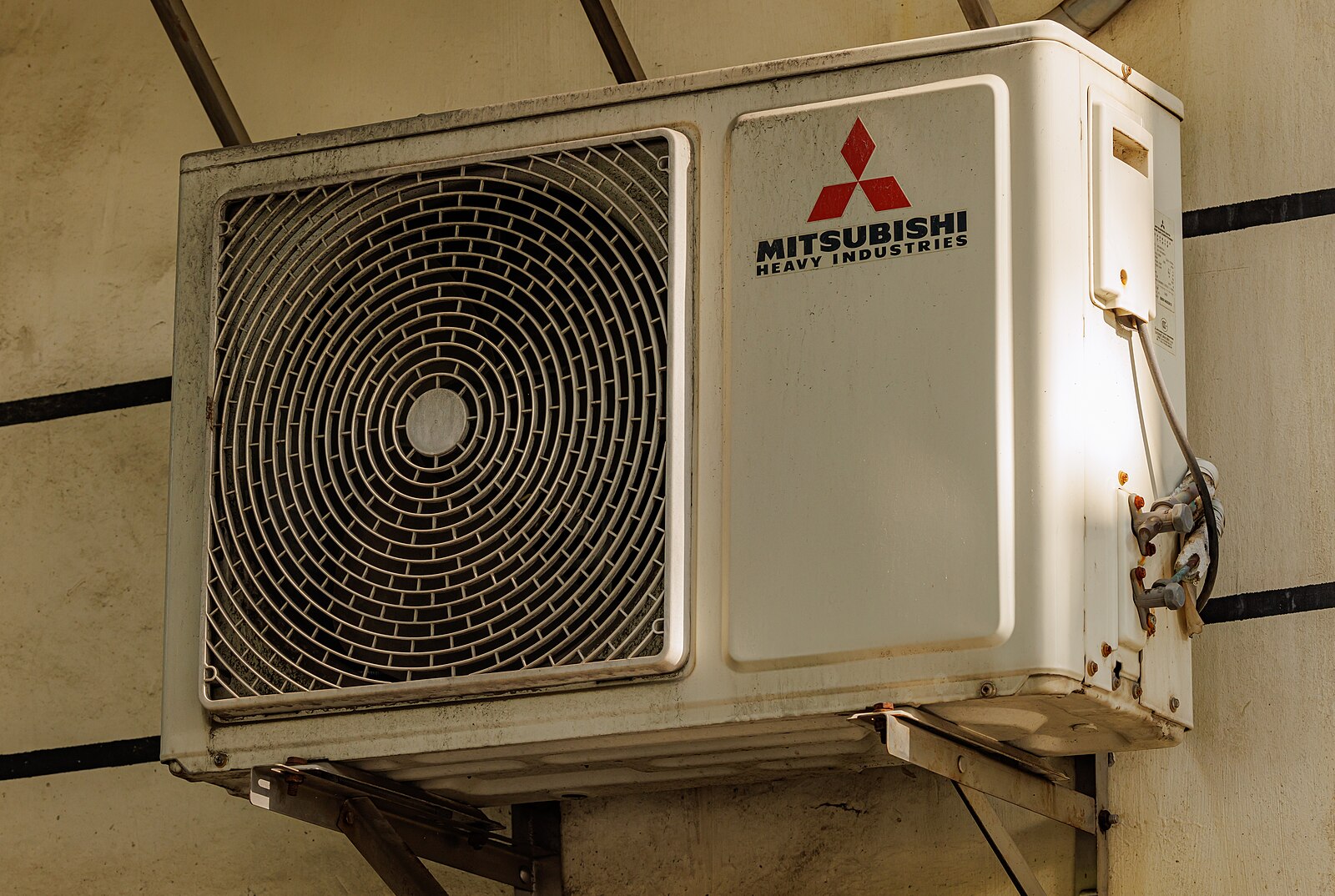Maintaining the air filter of your Mitsubishi split air conditioner is crucial for optimal performance, energy efficiency, and indoor air quality. This comprehensive guide will walk you through the step-by-step process of cleaning the air filter, ensuring your unit operates at its best.
Locate the Air Filter
The air filter in a Mitsubishi split AC is typically located behind the front cover of the indoor unit. To access it, you’ll need to gently pull the cover down or slide it to the side, depending on the specific model of your Mitsubishi split AC.
It’s important to note that some Mitsubishi split AC models may have additional filters, such as a deodorizing filter or a catechin filter, which cannot be washed with water. Be sure to identify and handle these filters accordingly, as they may require different cleaning methods.
Remove the Air Filter
 Image source: Mitsubishi ac By Dinkun Chen
Image source: Mitsubishi ac By Dinkun Chen
Once you’ve located the air filter, carefully remove it from its slot. Ensure that you handle the filter with care, as it can be delicate. Some Mitsubishi split AC models may have a locking mechanism or tabs that need to be released before the filter can be removed.
Clean the Air Filter
To clean the washable air filter, follow these steps:
-
Rinse under Running Water: Hold the air filter under running water, either from a garden hose or a sink. Gently brush or wipe the filter to remove any accumulated dirt, dust, or debris. Avoid using high-pressure water, as it may damage the filter.
-
Use a Mild Detergent (Optional): For a more thorough cleaning, you can use a mild detergent. Mix a small amount of the detergent with water and gently scrub the filter. Rinse the filter thoroughly to remove any remaining detergent.
-
Avoid Harsh Chemicals: Steer clear of using harsh chemicals, solvents, or abrasive cleaners, as they can damage the filter and potentially release harmful fumes.
-
Inspect for Damage: Carefully inspect the air filter for any signs of damage, such as tears, cracks, or deformation. If the filter is damaged, it should be replaced to ensure proper air flow and filtration.
Dry the Air Filter
After cleaning the air filter, it’s crucial to ensure it is completely dry before reinstalling it. Shake off any excess water and allow the filter to air-dry in a well-ventilated area. Alternatively, you can use a clean, dry towel to gently pat the filter dry.
Allowing the filter to dry completely is essential to prevent the growth of mold and mildew, which can compromise indoor air quality and the overall performance of your Mitsubishi split AC.
Reinstall the Air Filter
Once the air filter is dry, carefully place it back into its designated slot within the indoor unit. Ensure that the filter is properly aligned and securely in place.
Some Mitsubishi split AC models may have specific installation instructions or alignment guides to help you reinstall the filter correctly. Refer to your unit’s user manual or manufacturer’s instructions for any model-specific guidance.
Close the Front Cover
After reinstalling the air filter, gently slide or pull the front cover back into place, making sure it is properly closed and secured.
Maintain the Air Filter Regularly
For optimal performance and energy efficiency, it’s recommended to clean the air filter of your Mitsubishi split AC every two weeks. This frequency may need to be adjusted based on the usage and environmental conditions in your home or office.
In addition to the air filter, it’s also important to clean the heat exchanger and fan unit every three months or as needed. This comprehensive maintenance routine will help ensure your Mitsubishi split AC operates at its best, providing you with reliable and efficient cooling or heating.
By following this step-by-step guide, you can effectively clean the air filter of your Mitsubishi split AC and maintain its optimal performance. Remember to refer to your unit’s user manual for any model-specific instructions or recommendations.
